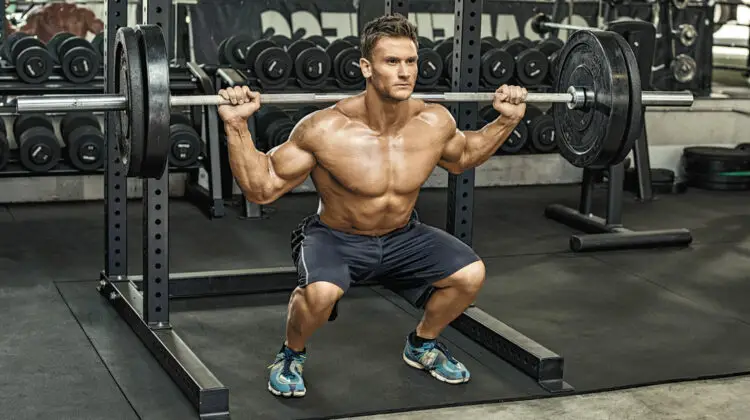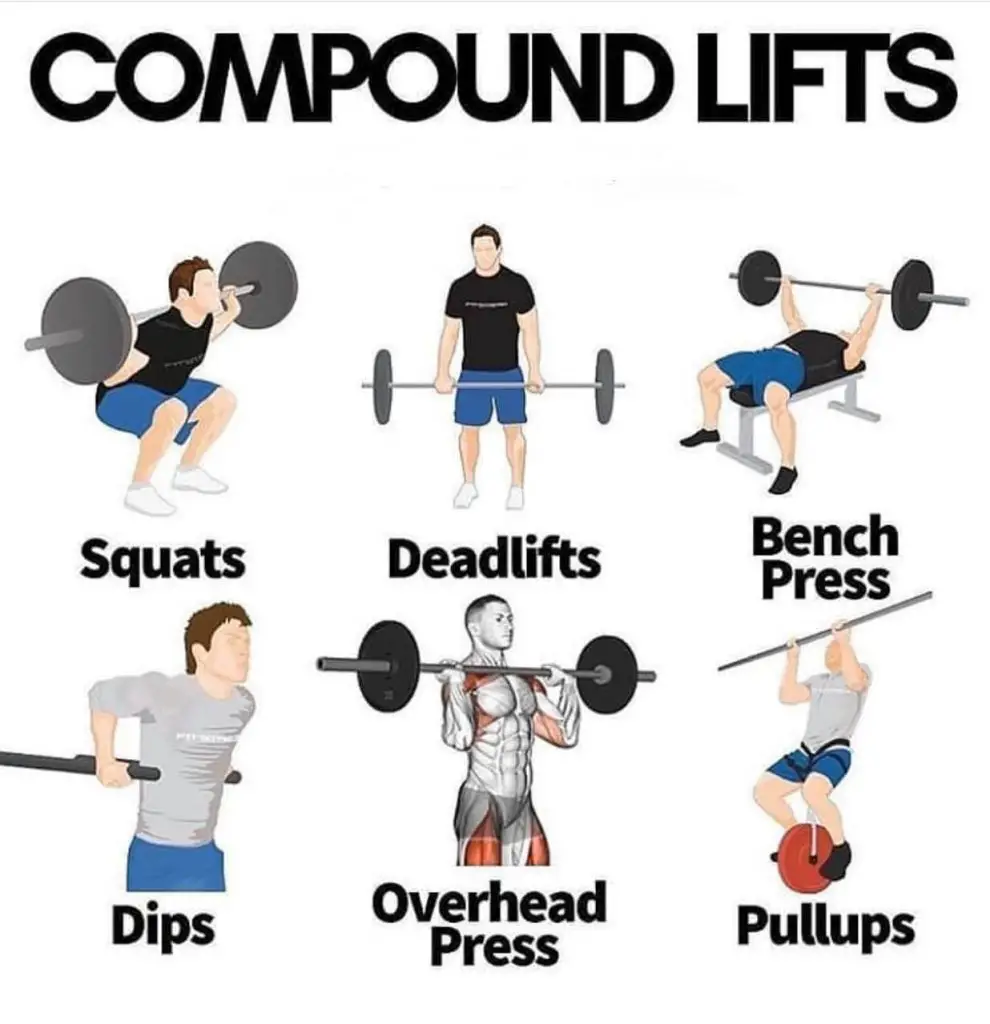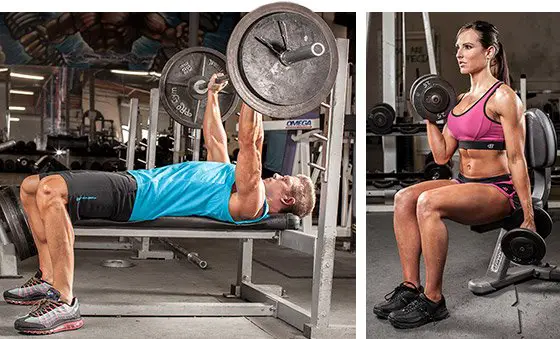
When it comes to achieving your fitness goals, understanding the most effective workout techniques is essential. One such technique that has gained immense popularity in recent years is compound workouts.
Whether you’re a seasoned fitness enthusiast or just starting your journey, compound workouts offer a host of benefits that can help you achieve results more efficiently. In this blog, we’ll delve into what compound workouts are and explore the numerous advantages they bring to your fitness routine.
Also, we will let you know how you can add compound workouts in your workout routine efficiently with an sample of compound workout routine. So let’s get started and we hope you like and enjoy. this article as much as you enjoy your workout sessions.
What Are Compound Workouts?
Compound workouts, also known as multi-joint exercises, involve engaging multiple muscle groups and joints in a single movement. Unlike isolation exercises that target a single muscle group, compound exercises demand coordination and effort from several muscle groups simultaneously.
The following are some examples of compound exercises: lunges, squats, deadlifts, bench presses, and pull-ups. These movements recruit not only the primary muscles but also the stabilizing muscles, resulting in a comprehensive and effective workout.
What are the Golden 5 Compound Workouts?

- Squat: The squat is often referred to as the “king of all exercises.” It engages your quadriceps, hamstrings, glutes, lower back, and core. By performing squats regularly, you not only build leg strength but also enhance overall stability and balance.
- Deadlift: The deadlift is a powerhouse exercise that primarily targets your lower back, glutes, hamstrings, and traps. It’s a functional movement that translates to real-world strength, making it a crucial component of the Big 5 routine.
- Bench Press: The bench press is a classic upper-body compound exercise that works your chest, shoulders, and triceps. By incorporating bench presses, you develop a strong and well-defined upper body.
- Overhead Press (Shoulder Press): The overhead press targets your shoulders, triceps, and upper back. It helps build shoulder strength and stability, which are vital for various upper-body movements.
- Pull-Up/Chin-Up: While the pull-up primarily targets your back and biceps, it also engages your shoulders, core, and even your chest. Pull-ups or chin-ups build upper body strength and help you achieve that coveted V-shaped physique.
You May Also Want To Know: 5 Best Isolation Exercises And Their Importance
Benefits of Compound Workouts
- Time Efficiency: Compound workouts are excellent time-savers, as they engage multiple muscle groups in a single exercise. This means you can achieve a full-body workout or target multiple muscle groups in a shorter amount of time compared to doing isolated exercises.
- Increased Muscle Mass: Engaging various muscle groups leads to greater muscle activation and recruitment. This stimulation promotes the production of muscle-building hormones like testosterone and growth hormone, which contribute to enhanced muscle growth and strength development.
- Functional Strength: Compound exercises mimic real-life movements and activities, making your body more capable and functional in everyday tasks. Whether you’re lifting groceries, playing sports, or performing household chores, the strength gained from compound workouts translates into improved overall functionality.
- Caloric Expenditure: Due to the high intensity and involvement of multiple muscle groups, compound workouts help burn a significant number of calories during and after the workout. This can aid in weight management and fat loss goals.
- Boosted Metabolism: The increased muscle mass resulting from compound exercises leads to a higher resting metabolic rate. In simpler terms, your body burns more calories at rest, making it easier to maintain a healthy weight.
- Balanced Muscle Development: Compound exercises promote balanced muscle development by ensuring that all muscle groups work together harmoniously. This reduces the risk of muscle imbalances and associated injuries.
- Efficient Progression: Compound workouts provide a solid foundation for progressive overload – a key principle for muscle and strength gains. As you increase the weight or resistance over time, you’ll see steady progress and continuous improvements.
- Time-Saving Cardiovascular Benefits: The intensity of compound exercises gets your heart rate up, offering cardiovascular benefits similar to traditional cardio workouts. This can be particularly advantageous for those looking to improve cardiovascular health without spending hours on a treadmill.
Incorporating compound workouts into your fitness routine can be a game-changer on your journey to a healthier and stronger body. The efficiency, muscle-building potential, functional strength gains, and overall health benefits make compound exercises an essential component of any well-rounded fitness regimen.
Whether you’re aiming to build muscle, lose weight, or simply improve your physical capabilities, compound workouts offer a versatile and effective solution that can help you reach your goals more efficiently than ever before.
How to Incorporate Compound Workouts Into Your Routine?

Now that you understand the remarkable benefits of compound workouts, it’s time to consider how to integrate them into your fitness routine. Here’s a how-to manual to get you going:
- Assess Your Goals: Determine whether your primary focus is on building muscle, improving strength, or losing weight. This will help you tailor your compound exercises to align with your specific objectives.
- Choose Compound Exercises: Select a variety of compound exercises that target different muscle groups. Aim for a mix of lower body, upper body, and core-focused movements to ensure comprehensive muscle engagement.
- Plan Your Routine: Structure your workout routine to include compound exercises at least two to three times a week. Incorporate these exercises into your existing program or create a dedicated full-body compound workout day.
- Warm-Up: Begin your workout with a dynamic warm-up to prepare your muscles and joints for the upcoming compound exercises. Use motions that resemble the activities you’ll be doing.
- Focus on Form: Proper form is crucial to prevent injuries and maximize the benefits of compound exercises. Start with lighter weights or resistance to master the movement before gradually increasing the load.
- Progressive Overload: As you become more comfortable with the exercises, progressively increase the weight or resistance. This gradual increase challenges your muscles and promotes continuous growth.
- Rest and Recovery: Allow adequate time for rest and recovery between compound workout sessions. Muscles need time to repair and grow, so avoid overtraining.
- Nutrition and Hydration: Fuel your body with proper nutrition and stay hydrated to support muscle recovery and overall performance. Adequate protein intake is particularly important for muscle development.
- Pay Attention to Your Body’s Signals: Listen to your body. Stop exercising right away and speak to a fitness expert if you feel any pain or discomfort.
- Track Your Progress: Keep a workout journal or use a fitness app to record your exercises, sets, reps, and weights. Tracking your progress helps you stay motivated and allows you to see how far you’ve come.
Sample Compound Workout Routine
Here’s a sample compound workout routine that you can use as a starting point. Keep in mind to modify the weights and repetitions according to your level of fitness and your objectives.
- Squat (Back or Front): 3 sets x 8-10 reps
- Deadlift: 3 sets x 6-8 reps
- Bench Press (or Push-Up): 3 sets x 8-10 reps
- Pull-Up (or Bent-Over Row): 3 sets x 6-8 reps
- Lunges (Dumbbell or Bodyweight): 3 sets x 10-12 reps (each leg)
- Overhead Press: 3 sets x 8-10 reps
For Details Read: 3-Day Compound Workout Routine
Conclusion
Incorporating compound workouts into your fitness routine can revolutionize the way you approach exercise and yield incredible results. These multi-joint movements provide efficiency, functional strength, and a host of other benefits that contribute to a healthier and more capable body.
By carefully selecting compound exercises, focusing on proper form, and progressively challenging yourself, you’ll pave the way for consistent progress and long-term success on your fitness journey. So, take the leap and embrace the power of compound workouts – your body will thank you for it!

Leave a Reply
You must be logged in to post a comment.